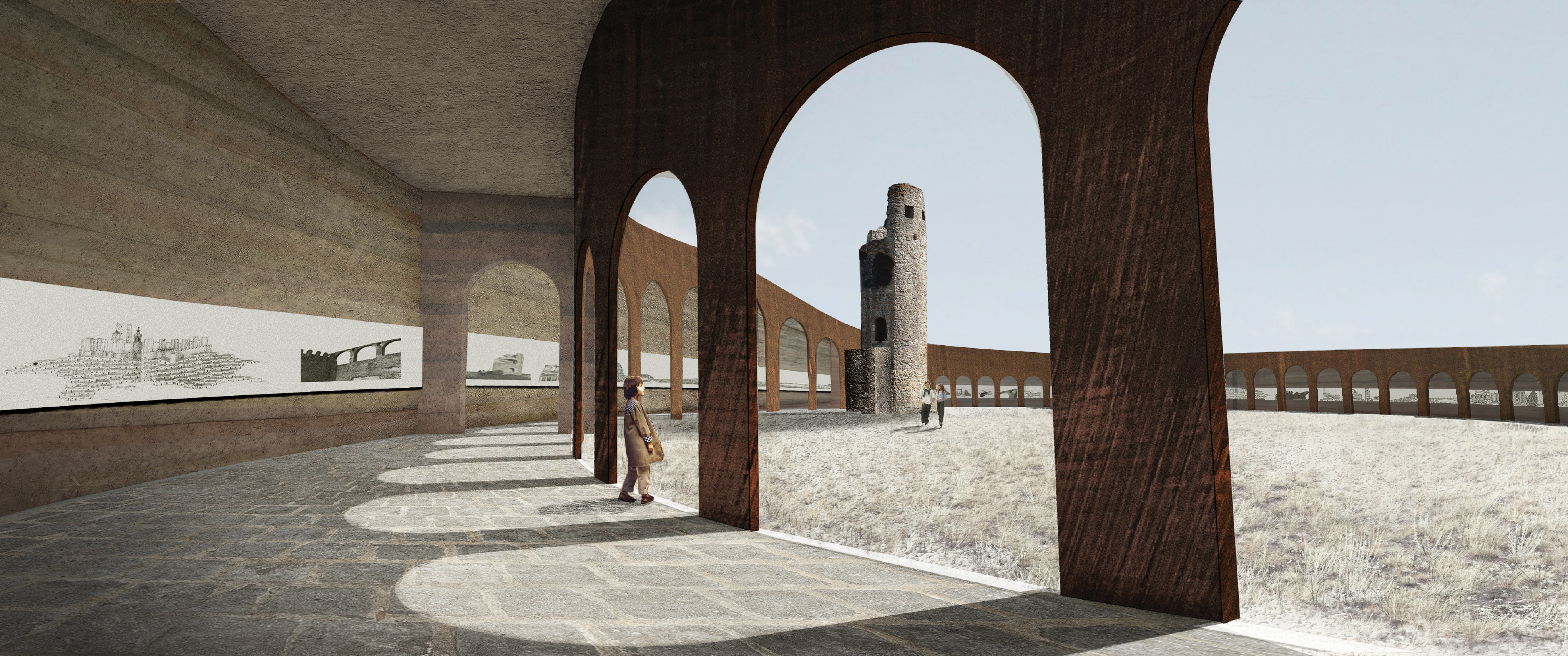The Sundial
March 2017 Competition Entry, Advisor: David Lieberman
Collaboration with Xin Liu, Florence Chenglin Zhu
"...silence becomes a space more than a real void, a pause that is absence of sound but enriched by a tension of meaning, in itself as silence, or in relation with what was before and after."
- Space, Poetics and Voids, Simone Pizzagalli
Lies about 3 kilometers outside of the town of Moura, Beja, Portugal, the medieval watchtower Atalaia Magra was formally an important hillfort for strategic defense of the territory. It was built to oversee the Castelo de Moura locates at the city center. Today the tower is a neglected landmark surrounded by oaks and olive trees in the undulating plain. The design is sensitive to the history of the region by presenting an array of arches at the inner layer, resonating with the arches at the castle.
The passing of time has been the key element in the design of the space. The Sundial emphasizes on the historical context and the natural context of the territory. To reflect on the history of the Atalaia Magra remains, the rings at on the ground resembles the trace left by the shadow of the watchtower. The excavated area is immersed into the surroundings and meant to be an exhibition space for the site history, re-examining the relation between the tower and the site. The Sundial is about the dialogues between the passing of time, the landscape and the architectural remains.
The passing of time has been the key element in the design of the space. The Sundial emphasizes on the historical context and the natural context of the territory. To reflect on the history of the Atalaia Magra remains, the rings at on the ground resembles the trace left by the shadow of the watchtower. The excavated area is immersed into the surroundings and meant to be an exhibition space for the site history, re-examining the relation between the tower and the site. The Sundial is about the dialogues between the passing of time, the landscape and the architectural remains.


The ruins
The tower is embraced by the earth, and the configuration of the form is influenced by the presence of the tower under the sun. As an extension to the remains, the path to the Atalaia Magra ruins follows its original route and the thin ribbon of the cultural center extends in the same direction.
The tower is embraced by the earth, and the configuration of the form is influenced by the presence of the tower under the sun. As an extension to the remains, the path to the Atalaia Magra ruins follows its original route and the thin ribbon of the cultural center extends in the same direction.


